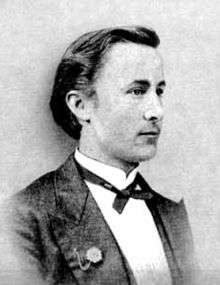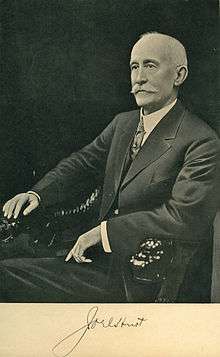Joel Hurt


Joel Hurt (1850–1926) was an important businessman and developer in Atlanta active in the late 19th century through the early 20th century.
Early life
Hurt was born on July 31, 1850, in Hurtsboro, Alabama, to Lucy Apperson Long (1822–1915) and Joel Hurt, Sr. (1813–1861). The town was originally named Hurtville for Joel Hurt, Sr. After attending Auburn Methodist College in Auburn, Alabama, for one year, he then enrolled at the University of Georgia in Athens, graduating in 1871 with a degree in civil engineering. He married Annie Bright Woodruff, and they had six children.
He began his career in the railroad business, surveying first in the western United States the rail bed that became the Atchison, Topeka and Santa Fe. He also surveyed a small spur off the Richmond and Danville line to Athens, Georgia.
Career
In 1875, Hurt moved to Atlanta, where he organized the Atlanta Building and Loan Association, which he ran for thirty-two years. He also co-founded the Trust Company of Georgia - now part of Suntrust - and, starting in 1895, was its president for nine years. In 1882, he organized the East Atlanta Land Company, where he designed and developed Inman Park, a residential area connected to the city center by his Atlanta and Edgewood Street Railway Company, which opened along Edgewood Avenue in 1886. It was Atlanta's first electric streetcar line, and it was the first profitable electric line in America. In 1880, he filed what would be US 365258 for an interesting thermal water valve.^ Then in 1887, he filed No. 374,188 for a new style of valve cock for faucets handling water under pressure.^
To anchor the downtown end of his streetcar line, he built Atlanta's first skyscraper, the Equitable Building, which in 1893 became the home of the two-year-old Trust Company. His next land deal was to be Druid Hills, for which he hired the Olmsted Brothers to design a linear park along Ponce de Leon Avenue, but he sold the enterprise to Asa Candler for half a million dollars in 1908. He also built Atlanta's first fireproof theater, the Atlanta Theater (also on Edgewood), and his masterpiece, the Hurt Building (which still stands).
Wall Street Journal bureau chief Douglas Blackmon's 2009 Pulitzer Prize-winning book, Slavery by Another Name, revealed the extent to which Joel Hurt's fortune was built upon the profitable and exploitative use of harshly-disciplined and cruelly-deprived convict labor.
In 1908, Hurt was unrepentant in hearings which brought out the shocking abuses in the Hurt family's convict labor camps. His callous indifference to evidence that many of his workers had died of abuse, and his viciousness in asserting that convict workers could not be beaten enough, horrified even contemporary Georgians. These hearings led in large part to the banning of convict leasing in Georgia.
In 1940, land was donated to the city by the Trust Company and a park was dedicated as Hurt Park which lies across Peachtree Center Ave. from the Hurt Building. The Joel Hurt Cottage[1] still stands near Elizabeth and Euclid Streets in Inman Park.
Notes
- ^ http://www.google.com/patents?vid=USPAT365258&id=RNJBAAAAEBAJ
- ^ http://www.google.com/patents?vid=USPAT374188&id=CMdRAAAAEBAJ
External links
References
- Blackmon, Douglas A., Slavery by Another Name: The Re-Enslavement of Black Americans from the Civil War to World War II, New York : Doubleday, 2008. ISBN 978-0385506250
- Edge, Sarah, Joel Hurt and the Development of Atlanta, Atlanta Historical Society, 1955
- Lichtenstein, Alex. Twice the Work of Free Labor: The Political Economy of Convict Labor in the New South. New York: Verso, 1996. ISBN 978-1859840863
- Mancini, Matthew J. One Dies, Get Another: Convict Leasing in the American South, 1866-1928. Columbia: University of South Carolina Press, 1996. ISBN 978-1570030833
- Martin, Harold, Three Strong Pillars, Trust Company, 1974
- A Different Kind of Slavery: After Abolition, Forced Labor Thrived in South; Helping Rebuild Atlanta, Wall Street Journal, 2008-03-29
| Preceded by Robert Lowry |
President of Trust Company of Georgia 1895 – 1904 |
Succeeded by Ernest Woodruff |